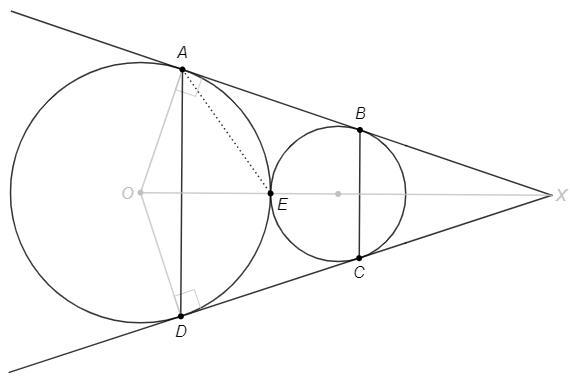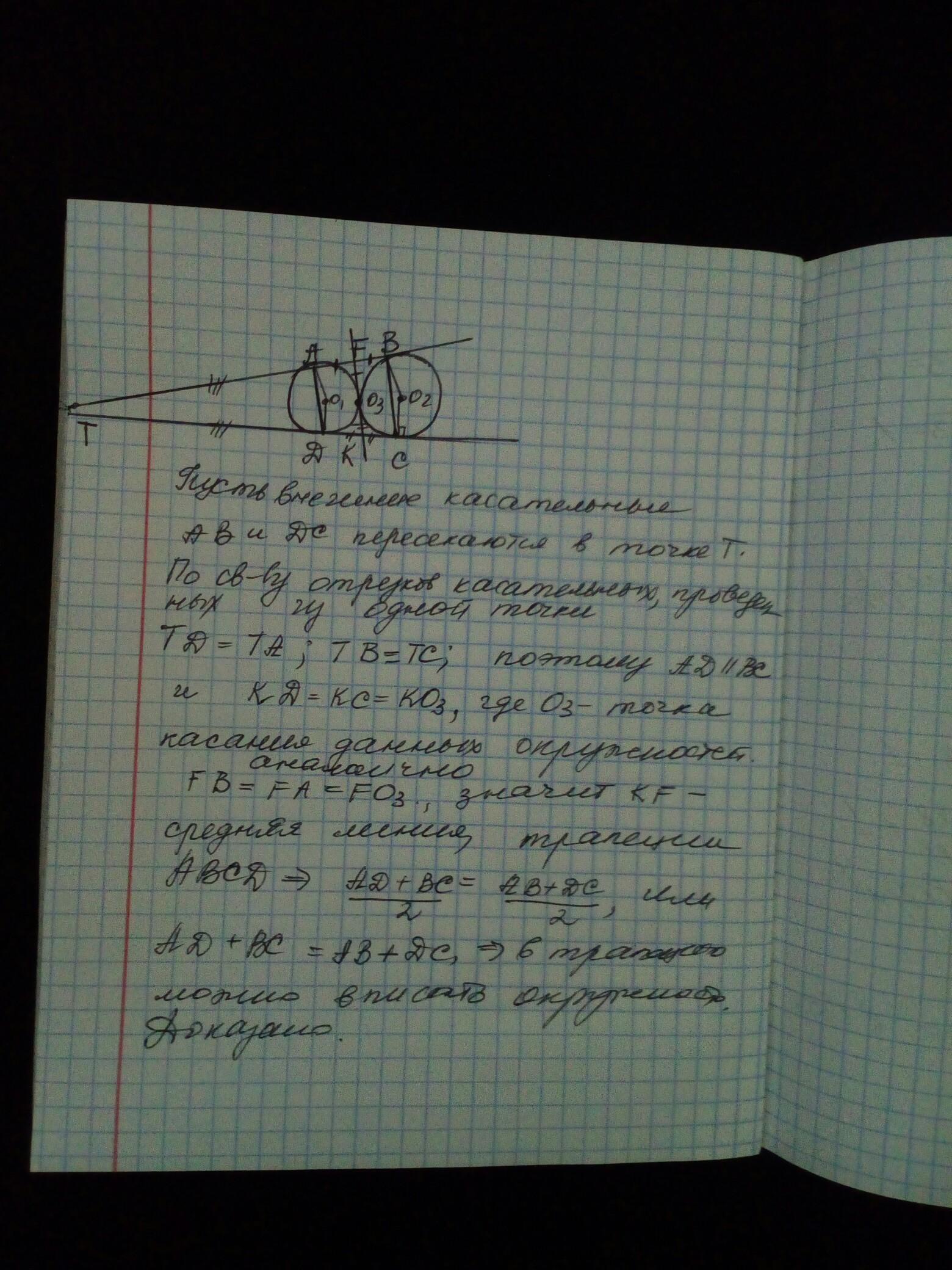Предмет: Геометрия,
автор: 2759060
две окружности имеют внешнее касание,прямые ab и cd их общие касательные.точки а,в,с,д-точки касания. докажите что в четырехугольник авсд можно вписать окружность.
Ответы
Автор ответа:
2
Окружность с центром O вписана в угол X.
△XOA=△XOD по катету и гипотенузе.
XO является биссектрисой углов X и AOD.
Точка касания окружностей E лежит на линии центров (биссектрисе углов X и AOD).
∪AE=∪DE
BAE =∪AE/2 (угол между касательной и хордой) =∪DE/2 =DAE
AE - биссектриса BAD
Аналогично другие углы.
Биссектрисы ABCD пересекаются в точке E.
Следовательно E - центр вписанной окружности ABCD.
Приложения:

Автор ответа:
1
Объяснение: см. во вложении
Приложения:

siestarjoki:
надо доказать, что O3 лежит на KF. Элементарно, но надо.
пардон, не надо :)
Похожие вопросы
Предмет: Русский язык,
автор: lenabunakova8
Предмет: Английский язык,
автор: katrino4ka08
Предмет: Другие предметы,
автор: Аидоочка07
Предмет: Биология,
автор: DariaFkK
Предмет: Литература,
автор: HAL523